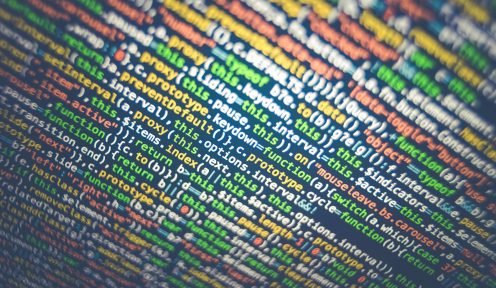
12.01.2021
What is fraud? Difference from gross negligence
 Por
Ortega Lopez-Bago , Francisco Javier
Por
Ortega Lopez-Bago , Francisco Javier 1.- ACTION AS A BASIC ELEMENT OF THE CRIME
The crime is composed of 5 basic elements. These are: the action, the typicality, the anti-juridicity, the culpability and the punishability. The action is the basic element of the crime. Thus, we understand action as human conduct manifested through an action, fact, act, or omission. This conduct produces a result. In this sense, it is in the action where we will find the legal concept of eventual malice. But first, let us look at the elements of the action.
2.-ELEMENTS OF THE ACTION
Within the action, we distinguish two types of elements. The positive elements and the negative elements. As for the positive elements, they are subdivided into objective and subjective elements. Within the objective elements, we distinguish: activity with result, passivity with result, activity without result and passivity without result. On the other hand, we have the subjective elements, finally arriving at our concept of analysis. Within the subjective elements, we find guilt and malice.
Before moving on to speak of the subjective elements of action, we have to explain the negative elements of it. These are cases in which there is no action. On the one hand we have the fortuitous case, that is, when the result does not depend on the person’s will. And the irresistible force, in which the subject experiences a total impossibility of physical movement. In addition, we can also speak of reflex movements and of situations or actions under full unconsciousness. In all these cases, there is no voluntariness, and therefore, there is neither human conduct nor action.
The voluntariness in the commission of the crime, the conscious guilt, is very relevant in the Tax Crime.
SUBJECTIVE ELEMENTS OF THE ACTION
As we have already said, the subjective element of human behavior is made up of malice and guilt. Or, if we prefer to call it another way, bad faith and recklessness (we will use the first two terms). We must take into account that between both concepts there is no absolute division, but quite the contrary. The line, as we will see below, is very diffuse.
In the plane of action (we remember that it is the first of the elements of the crime) we will only treat the malice and the guilt under its psychological aspect. This is because we leave to the typicality (second element) the study of the Spanish legislation on both concepts.
3. FRAUD AND ITS CLASSES: DIRECT MALICE AND EVENTUAL MALICE
The fraud is usually defined like the one who knows what he is doing and wants to do it acts fraudulently. Therefore, we see two elements of malice: intellectual and volitional. As for the first one, in order to be fraud, the active subject has to know the facts that he or she is performing. So, if on the contrary, he does not know some of the factual elements of his behavior, there cannot be fraud. One cannot want what one does not know, and therefore there is an error, which can be defeated or invincible.
TYPES OF FRAUD
As for the different kinds of malice, there are many classifications. We will focus on the most used division, according to which, we distinguish between direct and eventual or conditioned malice. In order to explain the difference between the two, we will look at the intellectual element: in the first, the author sees the result as true (I know perfectly well that shooting someone in the heart results in his death).
While in the second, only as a probability (if I push someone from a first floor, it does not have to be mortal, but there is a probability that he will die). Although, we can also distinguish them from the point of view of their volitional intensity. In the first, the author wants the result (a crime of murder with malice aforethought: a murderer who enters someone else’s house and kills the owner when he is sleeping). In the second, we are talking about a less intense way of wanting (sentence No. 757/2013 of the SC, 2nd Chamber, Criminal Law, 9 October 2013: a man threatens another man with running him over after a strong argument. Later, while driving, he is found crossing a pedestrian crossing. Fulfilling his threat and still very agitated by the argument, he decides to run over him without any intention of taking his life).
The Supreme Court’s Ruling of March 15, 2017
To see all this more clearly, let us look at the sentence of 15 March 2017. In this sentence, a man hit another man in the neck with a glass bottle without causing his death. The SC determined in its ruling that this was eventual malice and not direct malice. For the crime of homicide to exist, the agent must be aware of the scope of his actions. In other words, his action must be directed towards the goal of ending a person’s life. In this specific case, the agent did not intend to kill anyone, although this does not mean that his action is no longer malicious. He knew that he was creating a specific danger that was legally disapproved of. Although he did not specifically pursue causing that result, he understood that there was a high probability of its occurrence. Despite this, he decided to act. We see, therefore, in the jurisprudence of these courts the primacy of the first element of malice. That is, the intellectual element. This does not mean, however, that the volitional element is conclusively excluded.
Finally, it is worth mentioning that within direct malice, we distinguish between two sub-types of malice. First degree direct dolo and second degree direct dolo. The first is what the subject wants as an end, while the second is what the subject sees as necessarily linked to his end and therefore accepts.
4.-DIFFERENCE WITH GUILT
We can define guilt by saying that acts culpably who “at least could foresee the influence of his behavior or omission on the surrounding world”. Although he hoped it would not happen, he omitted the care that would have prevented it. Guilt would thus be the lower limit of what is voluntary. Further down, we would already encounter the fortuitous case, which we have already discussed.
Guilt, just as with malice, also has two parts, the intellectual element and the volitional element. And furthermore, we can also distinguish two types of guilt, guilt with foresight and guilt without foresight. In the first one, (from an intellectual point of view) the subject foresaw (driving under the influence of alcohol). While in the second, although he could foresee, he did not (mother who crushed her baby during sleep). From a volitional point of view, in the guilt with foresight we see an omission of due diligence. But in addition, we also see the hope that the reckless influence of behavior will not occur. In guilt without foresight, however, we see a culpable imprudence. This means that I did not want to be reckless because it did not even occur to me that I was committing recklessness. Even so, I omitted the diligence that would have made me pay due attention so that I could realize what I was doing.
Difference between eventual malice and guilt with foresight
So, you may be wondering, what is the difference between eventual malice and foresighted guilt? In eventual malice, the subject sees the result only as probable, but accepts it in the event that it occurs (I drive at high speed regardless of whether I hit someone or not). The difference with respect to the guilt with foresight must be put in the volitional element. In this one, the subject also sees the result as probable, but does not accept it; he expects it not to happen (I drive at high speed to get home soon, I do not want to hurt/kill anyone).
Let’s put it into practice. A case of guilt with foresight would be a driver intoxicated by alcohol. This driver, aware of his state of intoxication and the danger he poses to the traffic, takes the risk of taking the car. The only thing he wants is to get home as soon as possible and be able to go to bed. In the course of the journey from the premises he was running to his home, he runs over a pedestrian he did not see clearly. On the other hand, a case of eventual malice would be the driver who, also affected by alcohol and fully aware of his condition, drove: without lights, at high speed (knowing that there were pedestrians in that area), in the rain and with a broken windshield wiper. Killing a pedestrian on the spot.
5.-CONCLUSION
Let’s conclude with an example of eventual malice: in a street race between two cars, one of the drivers sees a person crossing. If he stops, he will lose the race, but if he continues to accelerate, he is likely to run over the pedestrian. He decides to continue.
We go little by little. First, why isn’t it a direct hit? Clearly, it’s not first-degree direct damage, as long as the goal was not to run over the pedestrian, but to win the race. Now, with respect to second-degree direct malice, the difference is not so clear.
From a volitional point of view, they are both very similar. Either he accepts to run over the pedestrian as a result necessarily linked to the end he wants to achieve, to win the race (second degree direct malice). Or it accepts the result of running over the pedestrian in case it happens (eventual dolo). To see clearly the difference between these two types of malice, we have to look at the intellectual element. This is because we are before a case of eventual malice insofar as the running over of the pedestrian is seen as probable (“if he continues accelerating it is probable that he will run over the pedestrian”) and not as certain (“if he continues accelerating he knows that he will run over the pedestrian”).
There is a lot of jurisprudence regarding the difference between these two legal concepts. A good example is the Supreme Court ruling of 25 November 2014.
Why it is not a case of guilt
Then, why isn’t this a case of guilt? It is clear that guilt without foresight is not. The driver was aware that there was a pedestrian on the road and therefore of the recklessness he was committing. But with respect to guilt with foresight, again, it is a little more complicated. Now it will be the volitional element that will allow us to see the difference. It is a case of eventual malice as long as the driver accepts the fact of running over the pedestrian in case it happens.
We have already said that he does not know for sure that he is going to run over him, but in case it happens, he accepts the fact of running over him. If it were a case of guilt with foresight, the driver would never want to have run over anyone. Rather, although he foresaw the possible hit-and-run, he decided to keep accelerating in the hope that no one would be hurt, or worse, killed.
If you still have any doubts or have found it interesting, a good example of possible malice can be found in Supreme Court Decision No. 757/2013, 2nd Chamber, Criminal Law, October 9, 2013.
For more information, below are some sentences in order of mention:
- Ruling No. 757/2013 of the Supreme Court, 2nd Criminal Chamber, October 9, 2013
- Sentence of the Supreme Court, March 15, 2017
- Supreme Court Ruling, November 25, 2014
And if you need a SECOND OPINION, do not hesitate to read on …
If this article has been of interest, we also suggest you to read the following article published on our website: Actual Knowledge, Constructive Knowledge, Imputed Knowledge and To the Seller´s Knowledge in a Purchase Agreement.
Contacto No te quedes con la duda, contacta con nosotros. Estaremos encantados de atenderte y ofrecerte soluciones.











